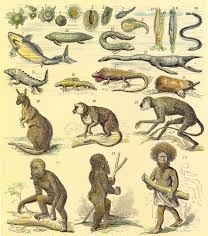 The Design Argument
The Design Argument
One of the most frequently used arguments for God’s existence is the design argument, sometimes also known as the Teleological Argument (from the Greek word “telos” which means “purpose”). This states that if we look around us at the natural world we cannot help noticing how everything in it is suited to the function it performs: everything bears evidence of having been designed. This is supposed to demonstrate the existence of a Creator. If, for example, we examine the human eye, we see how its minute parts all fit together, each part cleverly suited to what it was apparently made for: seeing.
Supporters of the Design Argument claim that the complexity and efficiency of natural objects such as the eye are evidence that they must have been designed by God. How else could they have come to be as they are? Just as by looking at a watch we can tell that it was designed by a watchmaker, so, they argue, we can tell by looking at the eye that it was designed by some sort of Divine Watchmaker. It is as if God has left a trademark on all the objects he or she made.
 This is an argument from an effect of its cause: we look at the effect (the watch or the eye), and from examination of it we try to tell what caused it (a watchmaker or a Divine Watchmaker). It relies on the idea that a designed object like a watch is in some ways very similar to a natural object such as the eye. This sort of argument, based on a similarity between two things is known as an argument from analogy. Arguments from analogy rely on the principle that if two things are similar in some respects they will very likely be similar in others.
This is an argument from an effect of its cause: we look at the effect (the watch or the eye), and from examination of it we try to tell what caused it (a watchmaker or a Divine Watchmaker). It relies on the idea that a designed object like a watch is in some ways very similar to a natural object such as the eye. This sort of argument, based on a similarity between two things is known as an argument from analogy. Arguments from analogy rely on the principle that if two things are similar in some respects they will very likely be similar in others.
Those who accept the Design Argument tell us that everywhere we look, particularly in the natural world — whether at trees, cliffs, animals, the stars or whatever — we can find further confirmation of God’s existence. Because these things are far more ingeniously constructed than a watch, the Divine Watchmaker must have been correspondingly more intelligent than the human watchmaker. Indeed, the Divine Watchmaker must have been so powerful, and so clever, that it makes sense to assume that it was God as traditionally understood by Theists.
Criticisms of the Design Argument
Weakness of analogy:
One objection to the argument just set forth is that it relies on a weak analogy: it takes for granted that there is a significant resemblance between natural objects and objects which we know to have been designed. But it is not obvious that, to use the same example again, the human eye is like a watch in any important respect. Arguments from analogy rely on there being a strong similarity between the two things being compared. If the similarity is weak, then the conclusion that can be drawn on the basis of comparison are correspondingly weak. So, for example, a wrist watch and a pocket watch are sufficiently similar for us to be able to assume that they are both designed by watchmakers. But although there is some similarity between a watch and an eye — they are both intricate and fulfil their particular functions — it is only a vague similarity, and any conclusions based on the analogy will as a result be correspondingly vague.
 Evolution:
Evolution:
The existence of a Divine Watchmaker is not the only possible explanation of how it is that animals and plants are so well- adapted to their functions. In particular, Charles Darwin’s theory of evolution by natural selection gives a widely accepted alternative explanation of this phenomenon. Darwin showed how, by a process of the survival of the fittest, those animals and plants best suited to their environments lived to pass on their genes to their offspring. This process explains how such marvellous adaptations to environment as are found in the animal and plant kingdom could have occurred, without needing to introduce the notion of God.
Of course Darwin’s theory of evolution in no way disproves God’s existence — indeed, many Christians accept it as the best explanation of how plants, animals, and human beings came to be as they are: they believed that God created the mechanism of evolution itself. However, Darwin’s theory does weaken the power of the Design Argument since it explains the same effects without any mention of God as their cause. The existence of such a theory about the mechanism of biological adaptation prevents the Design Argument from being a conclusive proof of God’s existence.
Limitations on conclusions:
Even if, despite the objections mentioned so far, you still find the design argument convincing, you should notice that it does not prove the existence of a unique, all-powerful, all-knowing, and all-good God. Close examination of the argument shows it to be limited in a number of ways.
First, the argument completely fails to support monotheism — the view that there is just one God. Even if you accept the the world and everything in it clearly show evidence of having been designed, there is no reason to believe that it was all designed by one God. Why could not it have been designed by a team of lesser Gods working together? After all, most large-scale, complex human constructions such as skyscrapers, pyramids, rockets, and so on, were made by teams of individuals, so surely if we carry the analogy to its logical conclusion it will lead us to believe that the world was designed by a group of gods working together.
second, the argument does not necessarily support the view that the Designer (or designers) was all powerful. It could plausibly be argued that the universe has a number of “design faults”: for instance, the human eye has a tendency to short-sightedness, and to cataracts in old age — hardly the work of an all-powerful Creator wanting to create the best world possible. Such observations might lead some people to think that the Designer of the universe, far from being all-powerful, was a comparatively weak God or gods, or possibly a young god experimenting with his or her powers. Maybe the Designer died soon after creating the universe, allowing it to runs down of its own accord. The Design Argument provides at least as much evidence for these conclusions as it does for the existence of God described by the Theists.So the Design Argument alone cannot prove that the Theists’ God rather than some other type of God or gods exists.
Finally, on the question of whether the Designer is all-knowing and all-good, many people find the amount of evil in the world counts against this conclusion. This evil ranges from human cruelty, murder and torture, to the suffering caused by natural disasters and disease. If, as the Design Argument suggests, we are to look around us to see the evidence of God’s work, many people will find it hard to accept that what they see is the result of a benevolent Creator. An all-knowing God would know that evil exists; an all-powerful God would be able to prevent it occurring; and all-good God would not want it to exist. But evil continues to occur. This serious challenge to belief in the Theists’ God has been much discussed by philosophers. It is known as the Problem of Evil.
As can be seen from this discussion, the Design Argument can only give us, at best, the very limited conclusion that the world and everything in it was designed by something or someone. To go beyond this would be to overstep what can logically be concluded from the argument.
